The consequences of the alterations in dopamine signaling we observed may be numerous. Neurobiologically, striatal dopamine alters intracellular signaling that affects synaptic plasticity 42. In addition, D2 receptors can alter striatal dopamine and acetylcholine levels and inhibit cortical glutamatergic transmission directly or indirectly 60,61,62. Furthermore, the balance of altered dopamine changes and subsequent effects on cellular excitability and fast synaptic transmission in the caudate and putamen will likely dictate the relative behavioral control by the associative and sensorimotor circuits. In this context, the decreases in release in the putamen of the repeated abstinence male monkeys may limit behavioral plasticity to a greater extent in this region relative to the caudate.
The intimacy specialist: discover the ideal frequency for sexual activity and why pets don’t belong in the bedroom
Every month, we launch fun challenges, like Dry/Damp January, Sober Spring, and Outdoorsy June. You won’t want to miss the chance to participate alongside fellow Reframers (or solo if that’s more your vibe!). Neural pathways aid in the effectiveness of repetitive actions and behaviors, which is beneficial for healthy habits such as exercise, playing an instrument, or cooking.
The dopamine high that comes from drinking is far more exciting than the effects of alcohol consumption. Dopamine levels plummet as alcohol’s effects wear off, frequently falling below normal levels. In contrast to the exhilaration we felt while drinking, this abrupt dopamine dip might leave us feeling gloomy, nervous, or depressed. The sharp rise and fall in dopamine levels might make recovering from drinking extremely difficult and reinforce a cycle of drinking in pursuit of that elusive dopamine high.
The dopamine system and alcohol dependence
- Patients were instructed to take one tablet on days when they perceived a risk of drinking alcohol.
- As a parent of a son that has struggled with drug addiction for over 10 years, Crestview was an answer to my prayer.
- Acutely, in vivo alcohol administration dose-dependently increases cortical, mesolimbic, and nigrostriatal dopamine in rodents 36; an effect attributed to enhanced dopamine neuron firing 37.
- And since hormones affect brain health so much, it’s been shown to enhance memory and reduce stress-induced fatigue.
- At Cloud9, we help you make mindful choices about alcohol while supporting your health.
Dopamine is released in response to rewarding stimuli, creating feelings of pleasure and satisfaction. This release encourages us to repeat behaviors that led to the reward, which is essential for survival-related activities like eating and reproduction. However, this same mechanism can also contribute to the development of addictive behaviors. Physical symptoms include impaired coordination, slurred speech, and vision changes. Mental symptoms include decreased inhibition, impaired judgment, mood changes, and reduced cognitive function.
2.5. Human genetic evidence: alcohol dependence and dopamine
This rather specific distribution pattern of dopaminergic neurons contrasts with other related neurotransmitter systems (e.g., serotonin or noradrenaline), which affect most regions of the forebrain. Schematic representation of the major dopaminergic systems (viewed from the top of the head). The nigrostriatal system originates in the A9 cell group and extends to the dorsal striatum, which includes the caudate nucleus and putamen (CPU). The mesolimbic system originates primarily in the A10 cell group and extends to the ventral striatum, which includes the nucleus accumbens (NAc) and the olfactory tubercle (OT). The mesocortical system also originates primarily in the A10 cell group and affects various regions of the cerebral cortex. Key factors include body weight, gender, metabolism rate, drinking speed, food consumption, type of alcohol, overall health, and genetic factors affecting alcohol processing ability.
Dopamine D2/3 autoreceptor sensitivity was decreased in chronic alcohol self-administering male macaques
This could be one factor contributing to the development of invariant alcohol consumption following long-term drinking with repeated abstinence observed in a previous study of cynomolgous macaques 8. In this context, the different dopaminergic changes in actively drinking versus repeated abstinence males are intriguing. One factor contributing to the development of AUD may be the change in synaptic signaling in the caudate and putamen that could contribute to a bias toward sensory-motor circuit control of behavior and inflexible alcohol consumption 33, 34.
Research has shown that chronic heavy drinkers may experience blunted dopamine release in response to alcohol compared to light drinkers. This reduced dopamine response could explain why individuals with alcohol use disorders often report needing to drink more to achieve the desired Sobriety effects. It may also contribute to the difficulty many people face in quitting alcohol, as they may struggle to experience pleasure from other activities due to altered dopamine function. Tolerance is another crucial factor in how alcohol affects dopamine release. As a person regularly consumes alcohol, their brain adapts to its presence, leading to tolerance. This means that over time, more alcohol is needed to achieve the same dopamine release and subsequent pleasurable effects.
- Dopamine exerts its effects by binding to specific receptors located on the surface of target cells.
- Nonetheless, altered dopamine kinetics or release could affect dopamine-dependent synaptic plasticity 42 that might subsequently affect new learning and behavioral flexibility.
- We hope that this work highlights the dopamine transporter and kappa opioid receptor has promising targets for further research aiming to identify pharmacotherapeutic interventions for reducing relapse risk in alcohol use disorder patients.
- This neurochemical reinforcement is a critical element in understanding how occasional drinking can sometimes evolve into a pattern of habitual consumption.
- This system is a network of brain structures that are activated when we experience something rewarding, like eating a delicious meal or achieving a goal.
Medications can be effective in managing withdrawal symptoms and mitigating the intensity of alcohol cravings. These include naltrexone (which reduces the rewarding effects of alcohol), acamprosate (which helps restore balance to neurotransmitter systems disrupted by chronic alcohol use), and disulfiram (which creates an aversive reaction to alcohol). While some medications may indirectly influence dopamine pathways, the primary mechanisms of action for alcohol dependence medications often involve other neurotransmitter systems like opioid and glutamate/GABA. “We found that people vulnerable to developing alcoholism experienced an unusually large brain dopamine response when they took a drink,” said Leyton. “This large response might energize reward-seeking behaviors and counteract the sedative effects of alcohol. Conversely, people who experience minimal dopamine release when they drink might find the sedative effects of alcohol especially pronounced.”
It carries oxygen to all parts of your body, and low levels can leave you feeling tired, pale and irritable. Researchers have found that it stimulates the conversion of tyrosine to dopamine and enhances the release of dopamine (49, 51). Unfortunately, many people today develop insulin resistance within the brain. Acetyl-L-carnitine (ALCAR) is a special form of the amino acid carnitine that helps reverse neurological decline and supports mitochondria function does alcohol create dopamine in the brain.
- In one study, researchers used brain scan imaging to confirm that meditation naturally increases dopamine release by 65% (45).
- Research suggests that dopamine levels begin to recover within weeks to months of quitting alcohol, though full restoration of the brain’s reward system may take longer depending on individual factors such as the duration and severity of alcohol use.
- Drinking more than this leads to alcohol accumulation in the blood, potentially causing dangerous levels of intoxication, organ damage, and in severe cases, alcohol poisoning or death.
- Besides that, if you have a co-occurring mental health challenge, you manage it.
- Conversely, those maintaining regular drinking habits often reported worsening conditions.
Researchers have shown that brains that have been injured by addiction can “unlearn” addictive behaviors, while the danger of addiction never goes away completely. Because you’re low on dopamine, you’ll turn to alcohol to boost your levels, but this will disable the brain’s built-in braking system, which restricts dopamine receptivity. As a result, alcoholics consume even more alcohol in an unconscious attempt to restore their dopamine levels and regain their spark. Traditionally, abstinence has been viewed as the primary goal when treating alcohol dependence. However, relapse rates remain alarmingly high for those seeking total abstinence through traditional 12-step programs and rehab.
Signs and Symptoms of Intoxication
In 2006, there were more than 1.2 million emergency room visits and 2.7 million physician office visits due to excessive drinking. The economic costs of excessive alcohol consumption in 2006 were estimated at $223.5 billion. Into Action Recovery Centers provides an abstinence-based program and all of our staff members have a strong understanding of the recovery process through personal experience. We are passionate about sharing the process involved in living a drug and alcohol-free life.
For example, it might reduce its natural production of GABA or increase glutamate to counteract the alcohol’s depressant effects. This creates a kind of imbalance in the brain’s chemistry, and over time, these changes can make it harder for your brain to function correctly or properly without alcohol. Alcohol is a depressant, so it slows down the brain and can amplify feelings of sadness or hopelessness. While some people drink to cope with emotional pain, alcohol often makes these issues worse in the long run, leading to a vicious cycle of self-medication and deteriorating mental health. When you drink alcohol, it doesn’t take long for it to start affecting your brain. One of the immediate impacts is how alcohol messes with your neurotransmitters—those chemical messengers that help your brain communicate.



